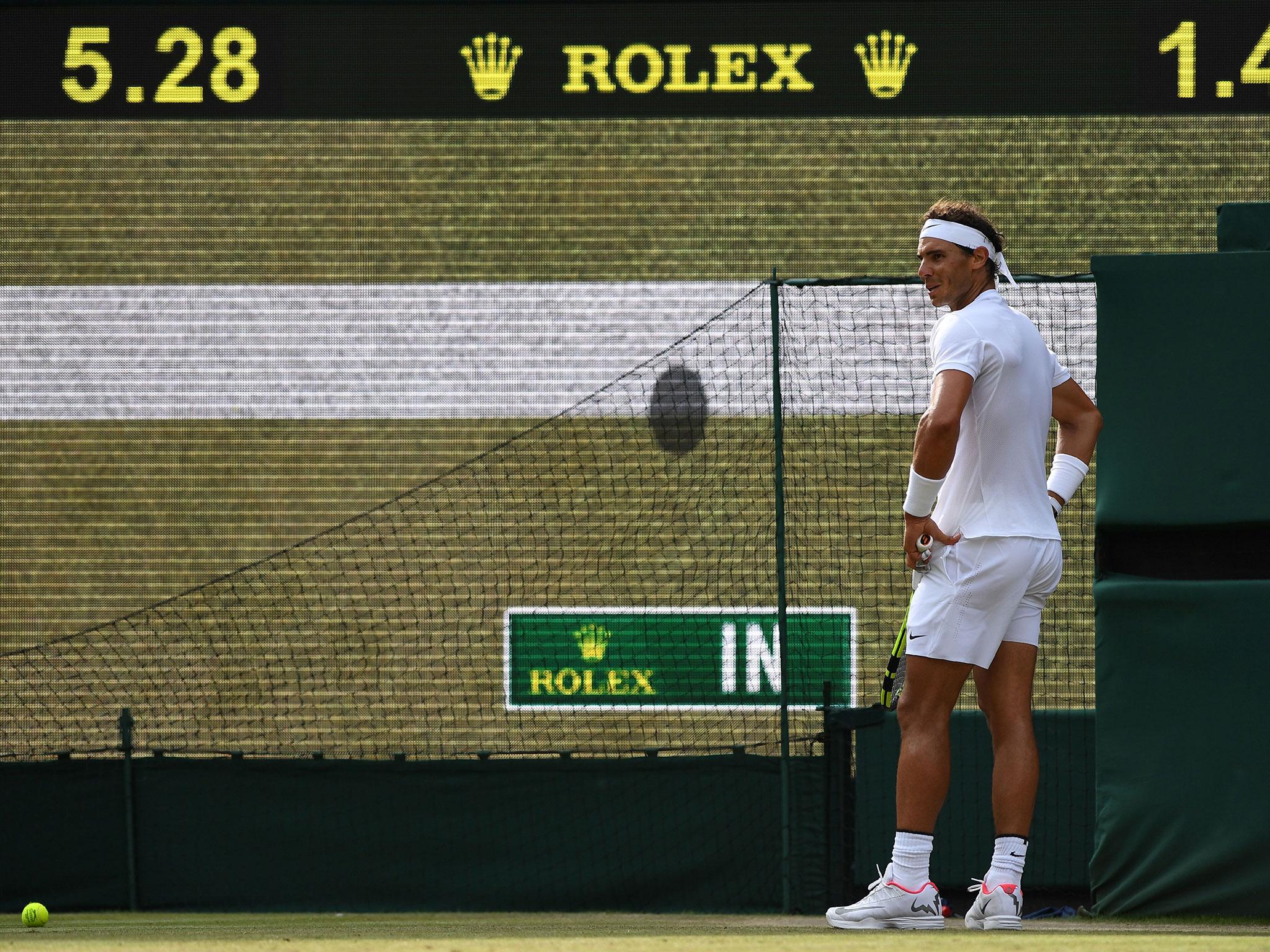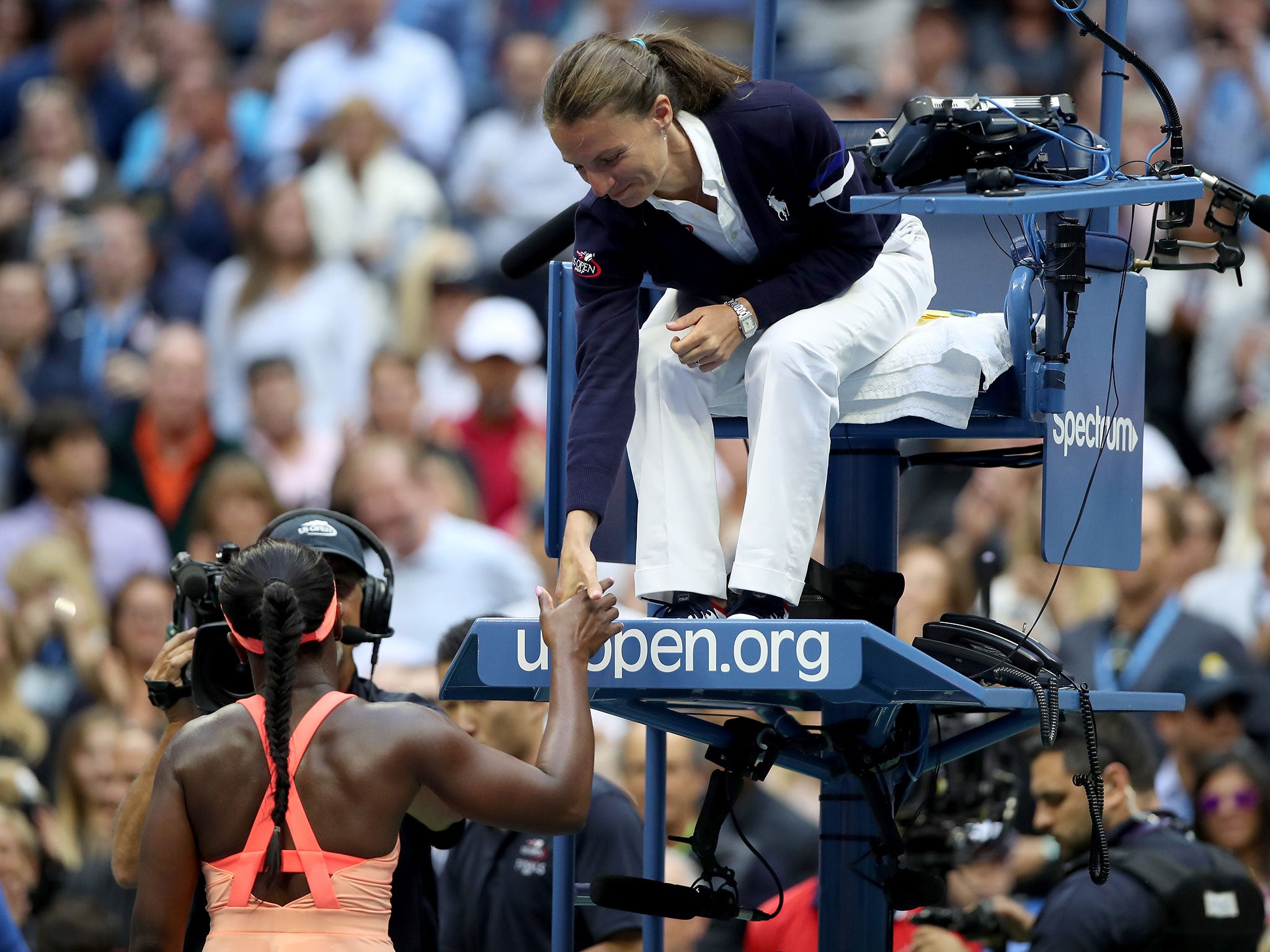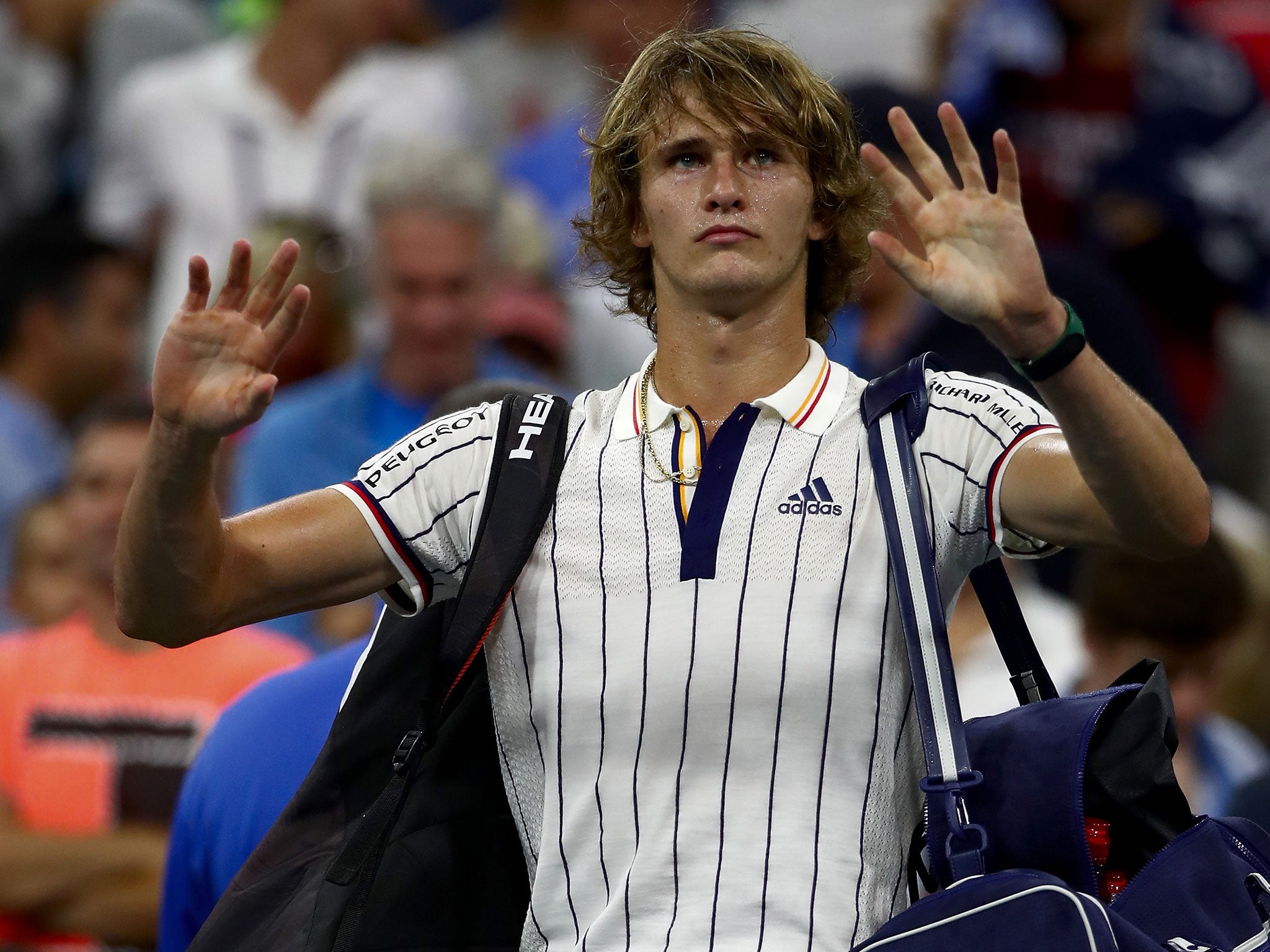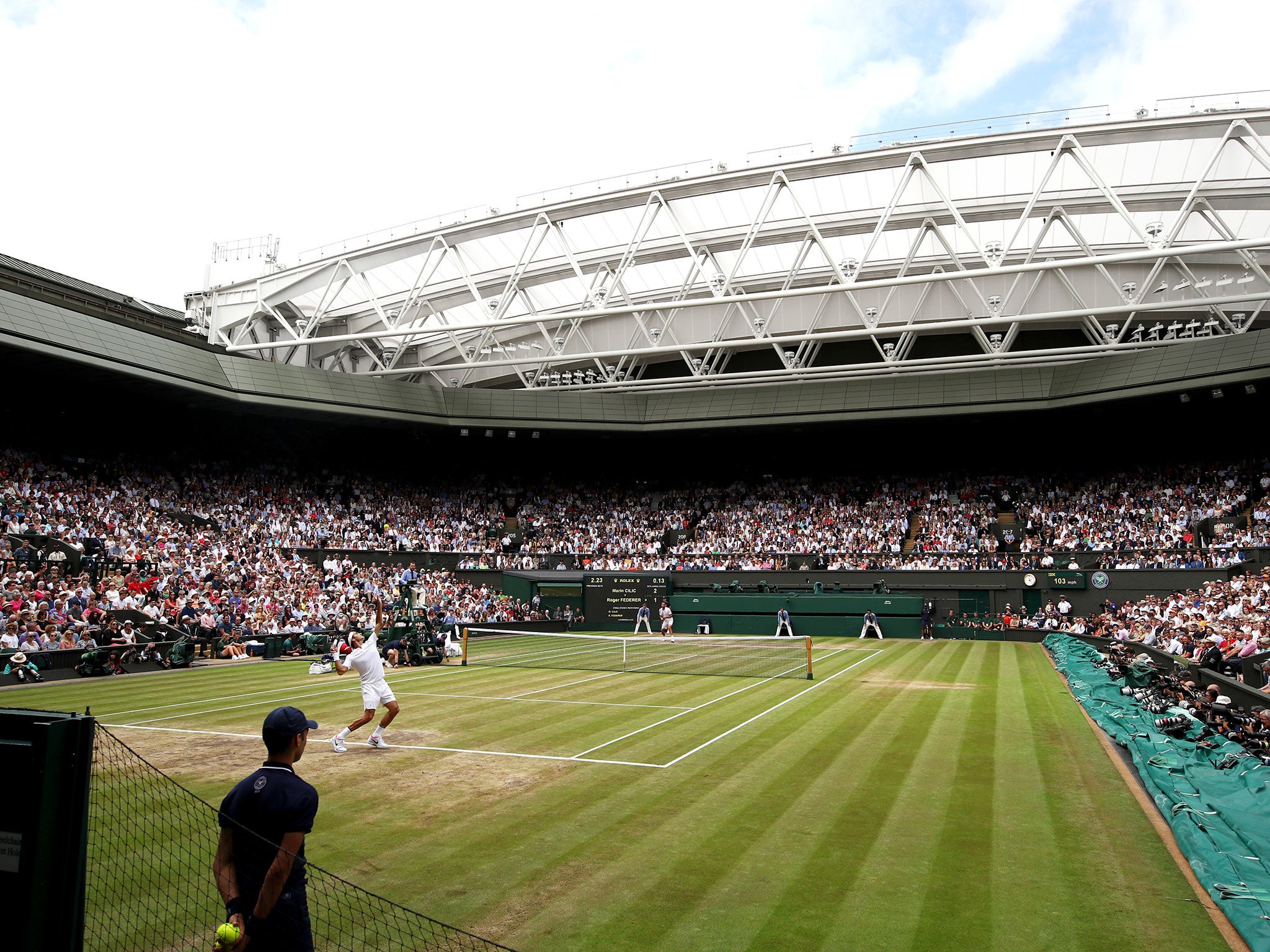Bright new future beckons for tennis as organisers prepare to prioritise Hawk-Eye at Next Gen Finals
The chair umpire will be the only official on court at the inaugural Next Gen ATP Finals, which will bring together the year’s best 21-and-under men in Milan in November

Your support helps us to tell the story
From reproductive rights to climate change to Big Tech, The Independent is on the ground when the story is developing. Whether it's investigating the financials of Elon Musk's pro-Trump PAC or producing our latest documentary, 'The A Word', which shines a light on the American women fighting for reproductive rights, we know how important it is to parse out the facts from the messaging.
At such a critical moment in US history, we need reporters on the ground. Your donation allows us to keep sending journalists to speak to both sides of the story.
The Independent is trusted by Americans across the entire political spectrum. And unlike many other quality news outlets, we choose not to lock Americans out of our reporting and analysis with paywalls. We believe quality journalism should be available to everyone, paid for by those who can afford it.
Your support makes all the difference.Line judges could be going the way of bus conductors, petrol pump attendants and supermarket check-out assistants. For the first time in the history of top-flight tennis, all line calls will be made by Hawk-Eye cameras at a tournament later this year.
The chair umpire will be the only official on court at the inaugural Next Gen ATP Finals, which will bring together the year’s best 21-and-under men in Milan in November. The line-calling system is one of several innovations that will be trialled at the tournament as the sport attempts to become more fan-friendly.
Hawk-Eye technology has been around for more than a decade and is currently used at all major tournaments, but until now it has been deployed only as a back-up to line judges, who still make all the on-court calls as to whether a ball is in or out. Players can refer calls to Hawk-Eye but are allowed only three unsuccessful challenges per set.
With “Hawk-Eye Live”, every ball will be tracked and an automated “out” call will be made whenever a shot misses a line. Players will no longer be able to challenge, but any close calls will be shown on video screens around the stadium. A video review official will monitor cameras to rule on foot faults.
Hawk-Eye Innovations and the Association of Tennis Professionals have been working together on the new technology for the last 18 months.
Gayle David Bradshaw, an ATP Executive Vice President, said: “This could be a landmark moment for officiating in our sport. Our athletes work incredibly hard and they deserve the very best and most accurate officiating we can offer.
“The technology is now in a place where we feel comfortable trialling this new system in a real tournament environment. The Next Gen ATP Finals in Milan is the perfect place to do this and we look forward to monitoring the results and assessing the merits of this new system.”

Sam Green, Director of Tennis at Hawk-Eye, said the system represented “the future of tennis officiating”. He added: “Working with the ATP has allowed us to refine the system to not only improve the quality of line-calling, but the overall fan experience.”
The Next Gen Finals, which will be held from November 7-11, will be contested by the seven 21-and-under players who have earned the most ranking points this year plus one wild card. The seven players currently leading the way are Alexander Zverev, Andrey Rublev, Karen Khachanov, Denis Shapovalov, Borna Coric, Jared Donaldson and Daniil Medvedev.
A number of other innovations are being trialled at the tournament as the ATP responds to the desire of many spectators, as well as broadcasters, to see shorter matches and more meaningful points. The ATP conducted extensive market research before deciding to experiment with the changes.
There is a feeling that, particularly in men’s matches, which can be dominated by the serve, many of the early games in a set can be too predictable. Although the matches at the Next Gen Finals will be over the best of five sets, each set will be won by the first player to win four games, with a tie-break played at 3-3. This will mean that players will still need to win a minimum of 12 games to win a match.

Within games there will be no ad-scoring, meaning that a deciding point will be played at deuce, with the receiver choosing on which side he will receive. That is the format currently used in doubles on the ATP tour.
There will also be a “no-let” rule on serves. If a serve clips the top of the net and lands inside the service box on the other side play will continue, as it does currently with any shot other than a serve which hits the top of the net on its way to the other side.
An on-court shot clock will be used to enforce the maximum of 25 seconds between points and to rule on lengths of breaks between sets, medical time-outs and the amount of warm-up time before a match. Warm-ups will be restricted to a maximum of five minutes and players will be allowed to take only one medical time-out in the match.
Coaches will not be allowed on court but will be permitted to communicate with their players at certain stages of the match.
Fans – other than those behind the baselines – will also be allowed to move freely in and out of the stadium during matches. The convention until now has been to allow spectators to move only at each change of ends.

The shot clock and courtside coaching were trialled during the qualifying tournament for the recent US Open and both were regarded as a success.
Britain’s Cameron Norrie, who won three matches in qualifying at Flushing Meadows to reach the main draw, said: “I liked it. It didn’t faze me at all. I play pretty quickly so it was fine for me. The coaching, I didn’t really use it too much, just on serving, where to serve, but nothing really. I liked it. It was fine.”
Chris Kermode, Executive Chairman and President of the ATP, said: “The sports and entertainment landscape is changing rapidly, as are the ways in which fans are consuming our sport. This event is not only about the next generation of players, but also about the next generation of fans. We’ve created this new tournament precisely to allow us to look at some potential new elements, in a high-profile environment.
“We remain acutely aware of the traditions in our sport, and we will be sure to safeguard the integrity of our product when assessing if any changes should eventually be carried forward on to regular ATP World Tour events in the future.”
Join our commenting forum
Join thought-provoking conversations, follow other Independent readers and see their replies
Comments